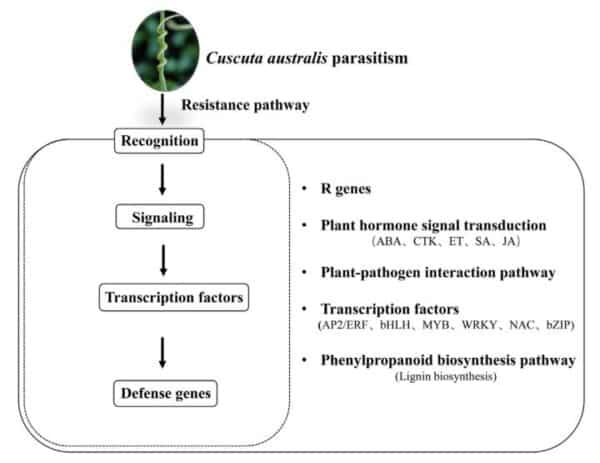Dodders (Cuscuta australis R. Br.) are holo-parasitic stem angiosperms with an extensive host range that have significant ecological and economic potential impact on the ecosystem and the agricultural system. However, how the host plant responds to this biotic stress remains mostly unexplored. To identify the defense-related genes and the pathways in white clover (Trifolium repens L.) induced by dodder parasitism, we performed a comparative transcriptome analysis of the leaf and root tissues from white clover with and without dodder infection by high throughput sequencing. We identified 1,329 and 3,271 differentially expressed genes (DEGs) in the leaf and root tissues, respectively. Functional enrichment analysis revealed that plant-pathogen interaction, plant hormone signal transduction, and phenylpropanoid biosynthesis pathways were significantly enriched. Eight WRKY, six AP2/ERF, four bHLH, three bZIP, three MYB, and three NAC transcription factors showed a close relationship with lignin synthesis-related genes, which defended white clover against dodder parasitism. Real-time quantitative PCR (RT-qPCR) for nine DEGs, further validated the data obtained from transcriptome sequencing. Our results provide new insights into understanding the complex regulatory network behind these parasite-host plant interactions.
Frontiers in Genetics 14:1106936, 2023
